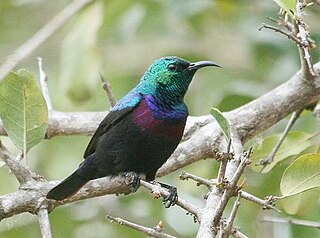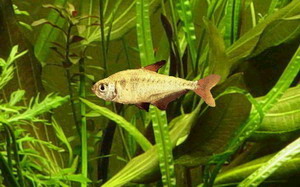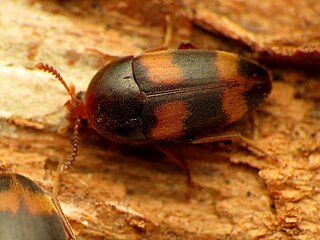
The olive oropendola is the largest member of the icterid family and rivals the Amazonian umbrellabird as the largest passerine bird in South America. It is sometimes placed in the genus Gymnostinops instead of Psarocolius. As suggested by its name, it is found widely – but often in low densities – throughout humid lowland forests of the Amazon Basin, with the notable exception of most of the Guiana Shield. It is sometimes split into two species, the western olive oropendola and the eastern Pará oropendola, but the subspecies P. y. neivae is widely recognized as a hybrid swarm, and the vast majority of authorities consider them a single species.

The banded rubber frog is a species of frog in the family Microhylidae. It is found in central and southern Africa. Its natural habitats are dry savanna, moist savanna, subtropical or tropical dry shrubland, subtropical or tropical moist shrubland, subtropical or tropical dry lowland grassland, subtropical or tropical seasonally wet or flooded lowland grassland, subtropical or tropical high-altitude grassland, intermittent freshwater lakes, intermittent freshwater marshes, arable land, pastureland, water storage areas, ponds, and canals and ditches. The female can reach a maximum size of 65 mm whereas the tadpoles can reach a size of 37 mm. The maximum size of the male is yet unknown, but sizes differ from 45 mm to 68 mm.

Rhacophorus bifasciatus is a species of frog in the family Rhacophoridae endemic to Indonesia. Its natural habitats are subtropical or tropical moist lowland forests, subtropical or tropical moist montane forests, and rivers. It is threatened by habitat loss.

The purple-banded sunbird is a species of bird in the family Nectariniidae. It is found in Angola, Botswana, Republic of the Congo, Democratic Republic of the Congo, Ethiopia, Eswatini, Gabon, Kenya, Malawi, Mozambique, Namibia, Rwanda, Somalia, South Africa, Tanzania, Uganda, Zambia, and Zimbabwe.

The buff-streaked chat or buff-streaked bushchat is a species of bird in the family Muscicapidae. It is found in Lesotho, South Africa, and Eswatini. Its natural habitat is subtropical or tropical dry lowland grassland.

Cuatro Cienegas pupfish is a species of fish in the Cyprinodon genus of the family Cyprinodontidae.

Clypeomorus is a genus of sea snails, marine gastropod mollusks in the subfamily Cerithiinae of the family Cerithiidae.

The Shimofuri goby is found in fresh and brackish waters. However, it is most abundant in low-salinity environments. The fish has typical features consistent with the family Gobiidae and grows to a maximum of 12 centimeters. These characteristics include two pelvic fins united from a conical sucking disk, a spiny anterior and a soft posterior dorsal fin, and eyes near the top of the head. These fins typically have 6-7 spines and 11-14 rays with orange tints on the edges. The Tridentiger bifasciatus has a flat wide head and is highly variable in color, but generally light or dark brown with midlateral spots and minuscule white spots on the head.
Dipogon bifasciatus is a spider wasp from the family Pompilidae.

Symmorphus bifasciatus, the willow mason-wasp, is a species of potter wasp, from the subfamily Eumeninae of the social wasp family Vespidae which is widely distributed in the Palearctic region.

Hyphessobrycon bifasciatus, the yellow tetra, is a species of fish in the family characidae.

Pseudocneorhinus bifasciatus, the twobanded Japanese weevil, is a species of broad-nosed weevil in the beetle family Curculionidae.
Megaderus bifasciatus is a species of long-horned beetle in the family Cerambycidae. It is found in Central America and North America.
Cnemotettix bifasciatus is a species of wetas & king crickets in the family Anostostomatidae. It is found in North America.

Holostrophus bifasciatus is a species of polypore fungus beetle in the family Tetratomidae. It is found in North America.

Epeolus bifasciatus is a species of cuckoo bee in the family Apidae. It is found in Central America and North America. It is a parasite of Colletes latitarsis.
Alphitophagus is a genus of beetles belonging to the family Tenebrionidae.
Alestopetersius bifasciatus is a species of African tetra fish. It is found in Lake Tumba and the Tshuapa River with related rivers in the middle Congo River basin in the Democratic Republic of the Congo.













